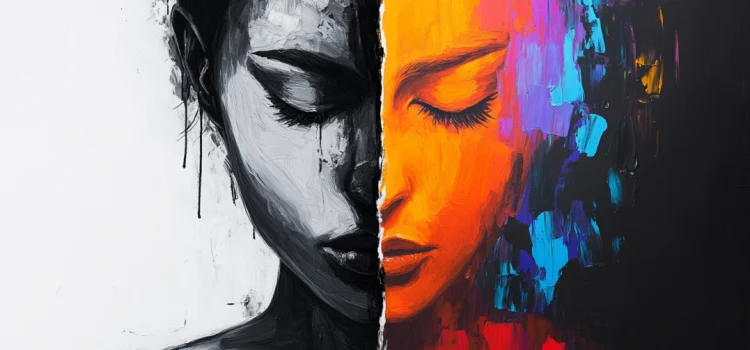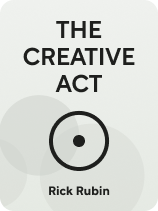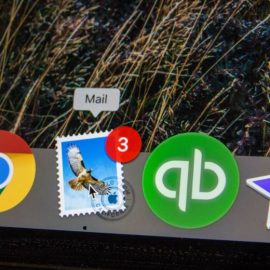

This article is an excerpt from the Shortform book guide to "The Creative Act" by Rick Rubin. Shortform has the world's best summaries and analyses of books you should be reading.
Like this article? Sign up for a free trial here.
Are you stuck in a creative rut? What are the most common barriers to creativity? How can you overcome them?
In his book The Creative Act, music producer Rick Rubin says that there are three main barriers to creativity: self-doubt, expectations, and having a predetermined purpose. Thankfully, he also gives some advice for overcoming these barriers.
Keep reading for Rubin’s advice on overcoming creative blocks.
1. Self-Doubt
The first barrier to creativity is one of the most paralyzing challenges creatives face. Rubin highlights how doubting your ability or worthiness to create can stop you before you even start. He advises pushing past these doubts by focusing on the process rather than pre-judging the outcome. Remember, every creator experiences doubt; what distinguishes successful creators is their ability to proceed in spite of it.
(Shortform note: Creative doubt isn’t a sign of personal failure but rather a consequence of how our brains are wired. This doubt arises from the tension between the executive functions of our brain—responsible for planning and decision-making—and the need for uninhibited, associative thinking that fuels creativity. The prefrontal cortex, which helps us organize and control thoughts, can inadvertently suppress the spontaneous ideas crucial for creativity. Moreover, the fear of negative evaluation taps into our deep-seated aversion to social rejection, intensifying this doubt. By recognizing these psychological underpinnings, you can begin to view creative doubt not as a flaw but as a common and manageable aspect of the creative process.)
When it comes to artistic “skill,” Rubin asserts that while mastering certain skills can be beneficial, the essence of creativity often lies in your unique perspective rather than in technical perfection. Embrace where you are in your skill development as part of your unique creative voice.
(Shortform note: Rubin argues the true measure of creativity often hinges more on a unique perspective than on flawless technical skill. As artists increasingly use artificial intelligence and other technologies in their work, they face new ethical considerations. These tools can amplify personal expression but also blur lines around originality and authenticity. Artists must navigate how to use technology to enhance their creative voice while ensuring it doesn’t overpower their individuality. Embracing your current skill level involves discerning whether these digital enhancements serve as mere extensions that facilitate artistic expression or if they risk becoming the dominant force in your creative process.)
2. Expectations
Many creators set high expectations for their work, which can lead to disappointment if those expectations aren’t met. Rubin suggests releasing any attachment to how your project “should” turn out, allowing creativity its own direction and flow. Art might evolve in unexpected ways; being open to where it leads offers freedom from limiting expectations.
Rubin notes that trying too hard to control the direction of your work stifles its natural evolution. Creativity is often a discovery process—part of its magic lies in not knowing exactly what you’ll uncover along the way. Rather than restricting possibilities by aiming for a predetermined outcome, let go and allow creativity free rein.
(Shortform note: While Rubin laments the limitations of expectations, if an artist accepts commissioned work, they often face explicit expectations that are non-negotiable. Therefore commissions require a balance where creative freedom must coexist within a client’s specifications. To help navigate this balance, artists should engage in clear and open communication with their clients from the outset. Establishing a shared understanding of the project’s goals, limitations, and the flexibility allowed within those confines is crucial. Regularly update clients with progress and seek feedback to ensure the project remains aligned with their vision.)
3. Predetermined Purpose
Finally, art often suffocates when it’s created with a predetermined purpose. Rubin explains that treating art as a means to an end—whether for fame, money, or acclaim—places undue pressure on both creator and creation. Rubin emphasizes that creating from a place free from such obligations allows for purer expression and often results in more compelling work because it comes from genuine exploration rather than an attempt at fulfilling external goals or metrics.
(Shortform note: Not all artists can afford the luxury of creating solely for artistic expression. While art for art’s sake is ideal, practicalities often necessitate a compromise between personal creative impulses and economic needs. As Lisa Congdon discusses in Art, Inc., the realities of earning a living can compel artists to accept commissions, follow market trends, or produce work that is commercially viable. Thus, Congdon highlights the importance of artists embracing business strategies and exploring various income streams in order to sustain their creative careers.)
On a similar note, Rubin argues that creating art to convey a predetermined message can unintentionally limit the creative process. By focusing on conveying a specific message from the start, artists might confine their work within rigid boundaries, hindering its natural evolution. Rubin advocates letting themes emerge organically rather than forcing them. This approach allows for more authentic and unpredictable expressions of creativity. He suggests that true artistic messages reveal themselves through the act of creation, leading to more profound and resonant works.
For example, imagine you’re a novelist who begins writing with a predetermined message about climate change. You find yourself constantly adjusting your characters and plot to fit this theme, often sacrificing authentic development and discarding intriguing ideas that don’t directly support your message. Following Rubin’s advice, you let go of the predetermined theme and allow the story to develop naturally. Surprisingly, environmental themes still emerge, but in more subtle and nuanced ways. Your resulting novel explores the complex relationships between individuals and their environment through rich character interactions and unexpected plot twists.
According to Rubin, this organic approach will lead to a more compelling and thought-provoking narrative than your original, message-driven concept.
| The Role of Art in Activism While Rubin emphasizes the organic development of themes in art, it’s important to recognize the significant role of intentionally message-driven art, particularly in advocating for social change. Artists who set out with a specific purpose, such as addressing inequality or political unrest, can spark awareness and inspire action. This approach doesn’t necessarily confine creativity and can amplify the impact of artwork by resonating deeply with audiences on pressing societal issues. Take Banksy’s mural “One Nation Under CCTV,” which depicts a child painting this phrase under the surveillance of a police officer and a dog. Strategically placed within view of an actual CCTV camera in London, this artwork directly criticizes the pervasive surveillance culture. By choosing to convey such a specific message through his art, Banksy demonstrates that predetermined themes can coexist with creativity and even enhance its impact by engaging viewers in critical societal discussions. This example shows how targeted artistic expression can powerfully resonate and influence public opinion while fostering dialogue on important issues like privacy rights and surveillance. |

———End of Preview———
Like what you just read? Read the rest of the world's best book summary and analysis of Rick Rubin's "The Creative Act" at Shortform.
Here's what you'll find in our full The Creative Act summary:
- Where creativity comes from and why it matters
- How to take inspiration from anywhere and everywhere
- A music producer’s advice for enhancing your creativity






